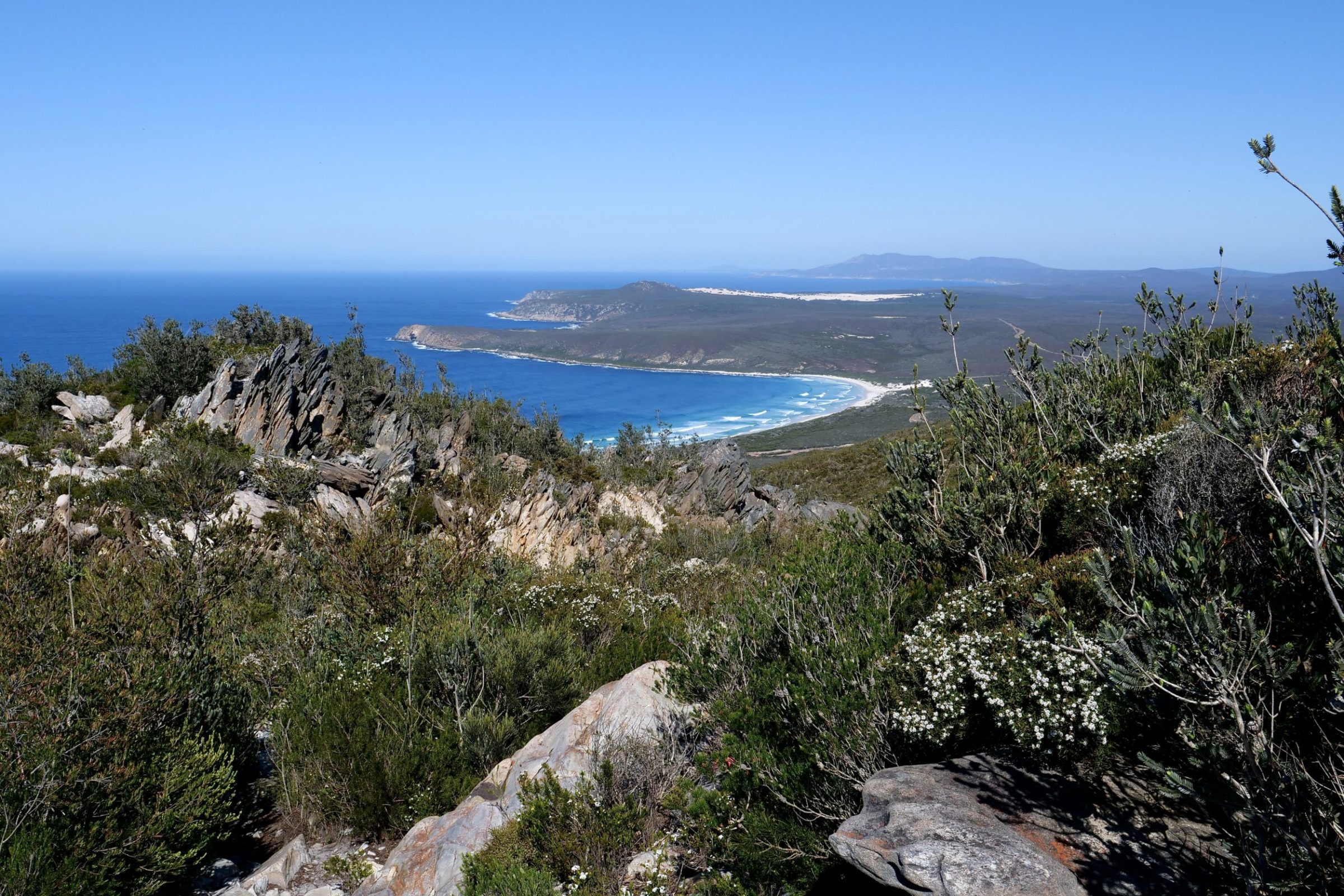One of Australia’s finest half day walks is the ascent & descent of East Mount Barren.
The path is not treacherous, it is very unlikely to be crowded, and – in mild weather, at least – it is eminently feasible for healthy septuagenarians, provided their knees have not “packed it in”.
The flora at your feet is incredible, most especially in Spring. (See earlier post)
The wider landscape is also magnificent, and no matter how many times you walk up & down this modest “mountain”, it will always deliver something new/different.
The featured image was taken on East Barren’s “shoulder”, near the one part of the walk that is not simply a straightforward walk, albeit at times a steep one; its one compulsory rock cleft is not at all difficult, provided you have two functioning arms.
If you do not, you would briefly need another’s person’s “hands up”.
At that point, you are most of the way up, and have already navigated the most difficult sections.
When you reach the summit, some agility/strength/nerve is required in order to clamber atop its rocks, but those who can’t/don’t rock-hop will still enjoy substantially the same 360 degrees’ worth of splendid views.
As you walk up, if you look left/north/inland you are looking across to the Eyre Range.
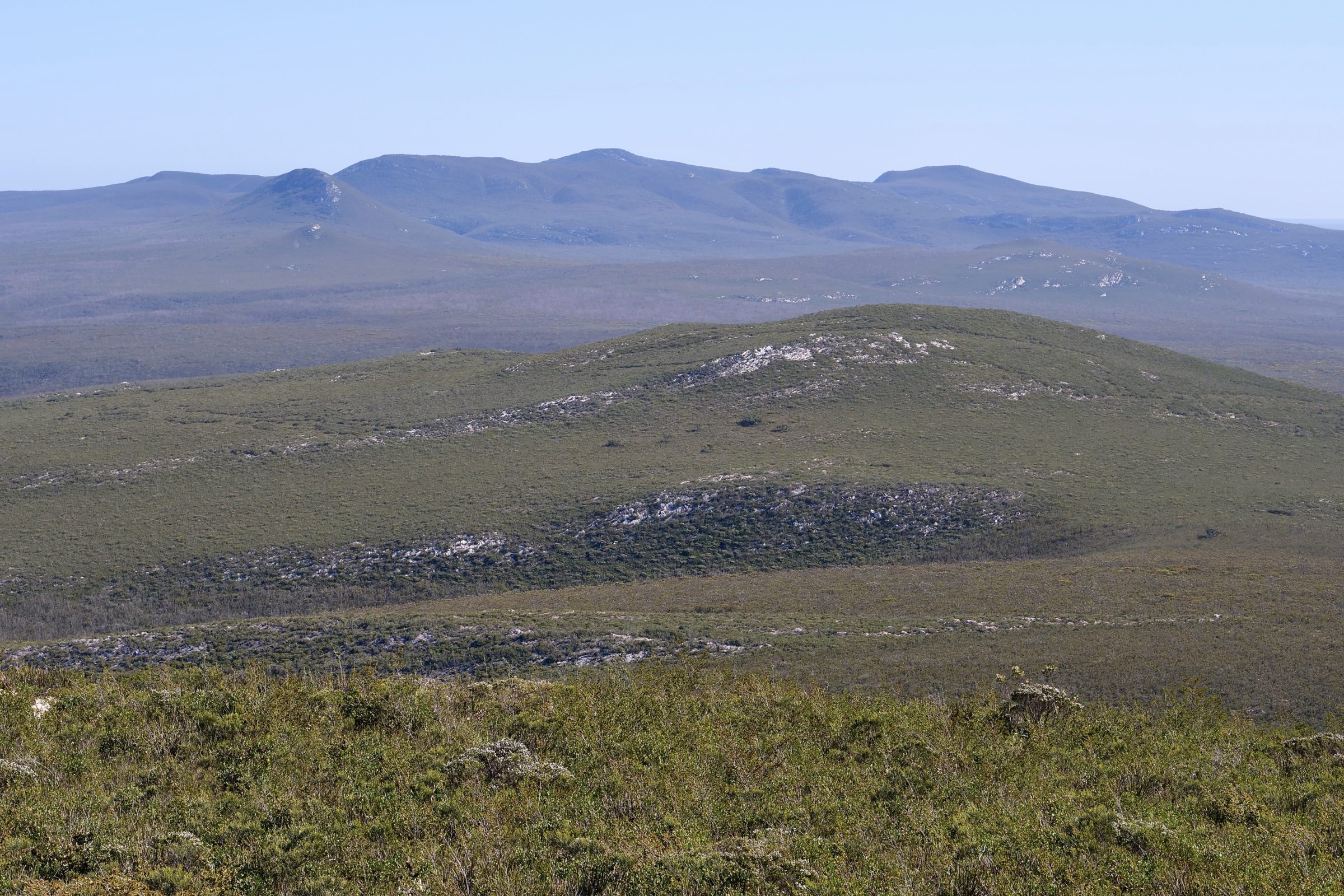
As you near the summit, if you look back, you just may see other walkers who have just come over the “shoulder” …but on many days you will probably have the entire trail to yourself.
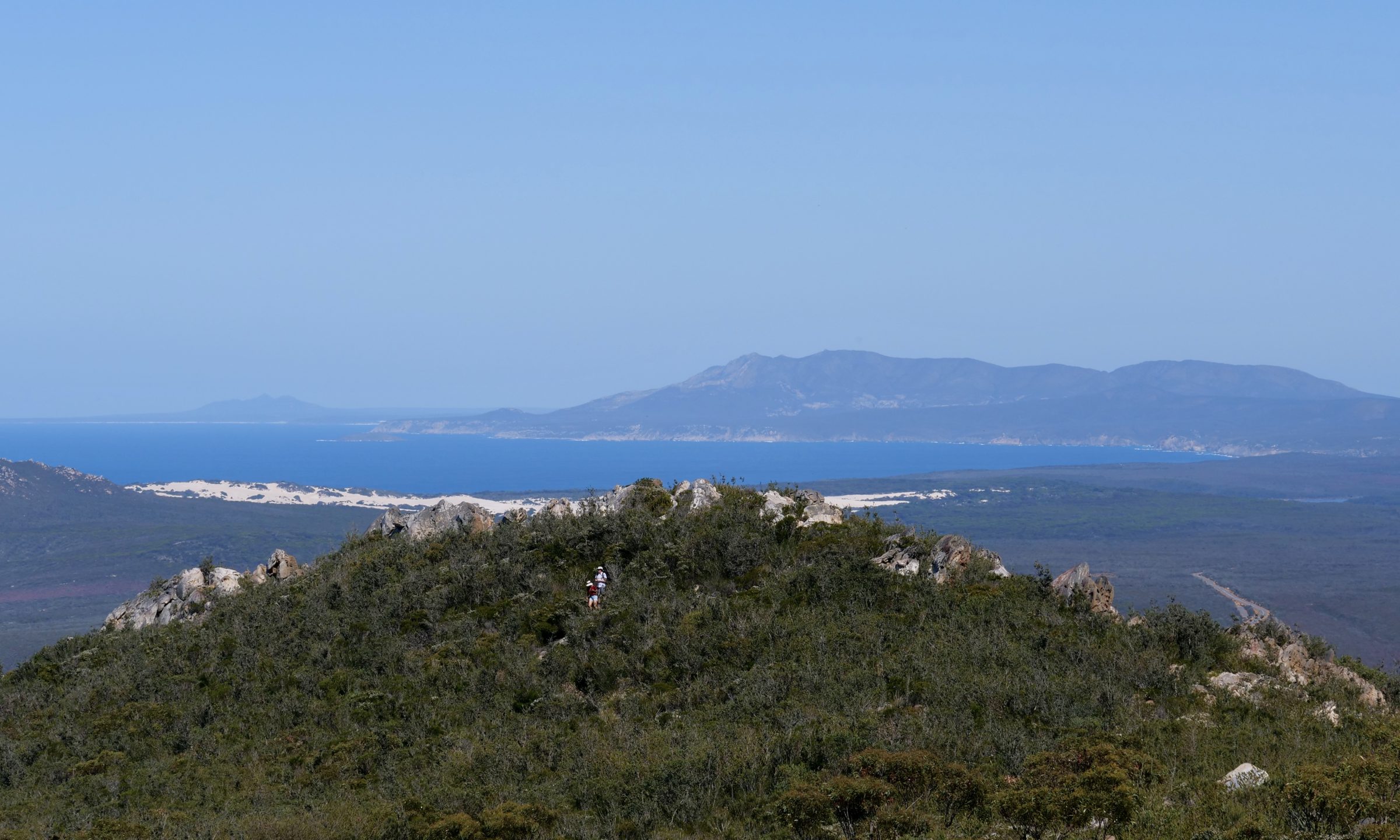
The “whole view, looking east” – over Culham Inlet, the town of Hopetoun, and beyond, with sandplains and unspoilt beaches stretching “forever” – only reveals itself at East Mount Barren’s summit.
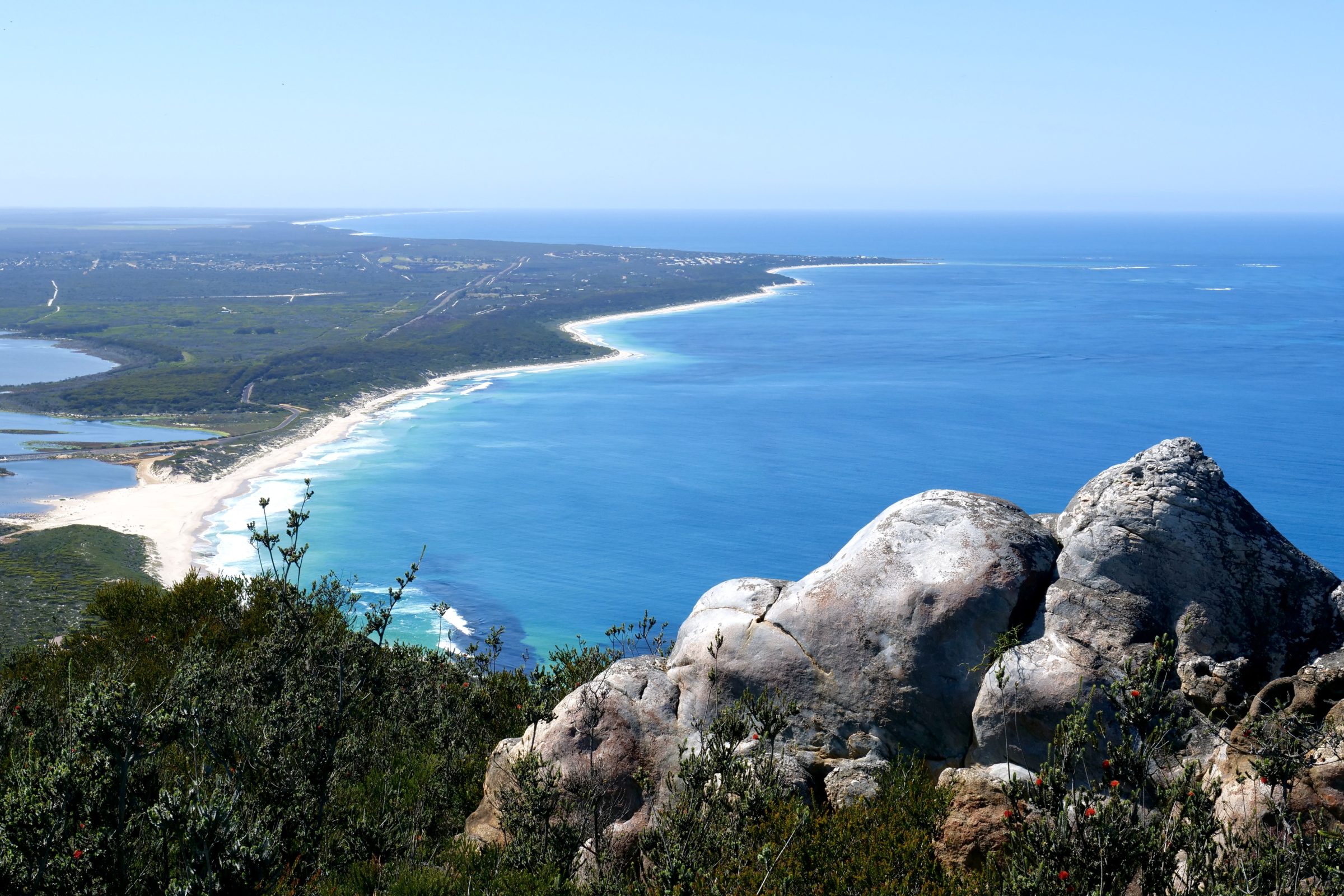
However, “looking west” is really where it’s at!
Even if you lack time or inclination to climb the mountain, you should at least drive to the car park at the foot of the trail.
There, you are already one third of the way up, with an already-glorious, uninterrupted view across much of the eastern part of “the Fitz”, which is as close as any readily-accessible Australian place gets to meeting a reasonable definition of “virgin”/ “pristine”/“wilderness”.
And, of course, the vegetation, right at your feet, is astonishing
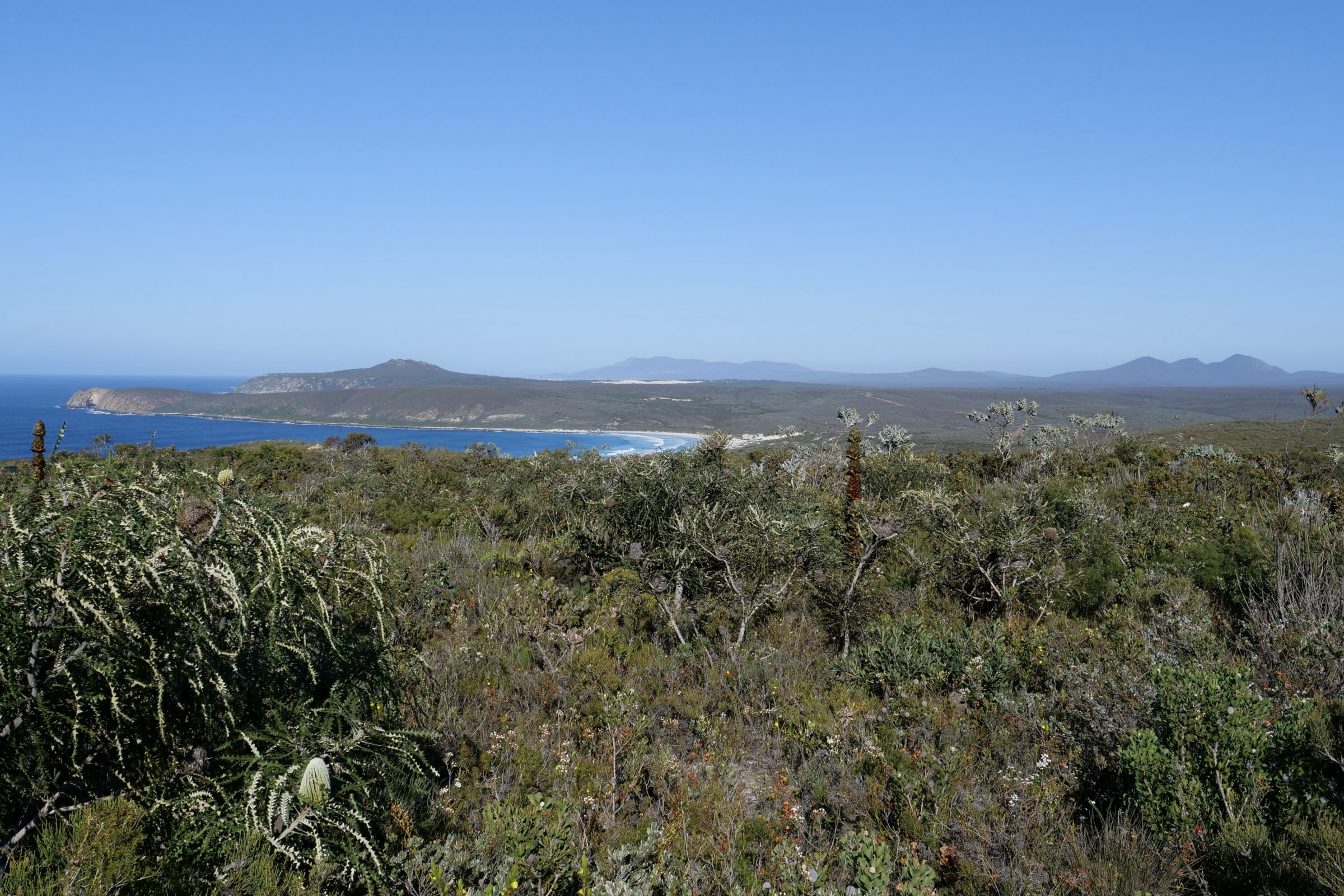
As you walk up, the westward views become progressively more splendid, especially if you pay equal attention to the “near” and “far” views, and how they relate to each other.
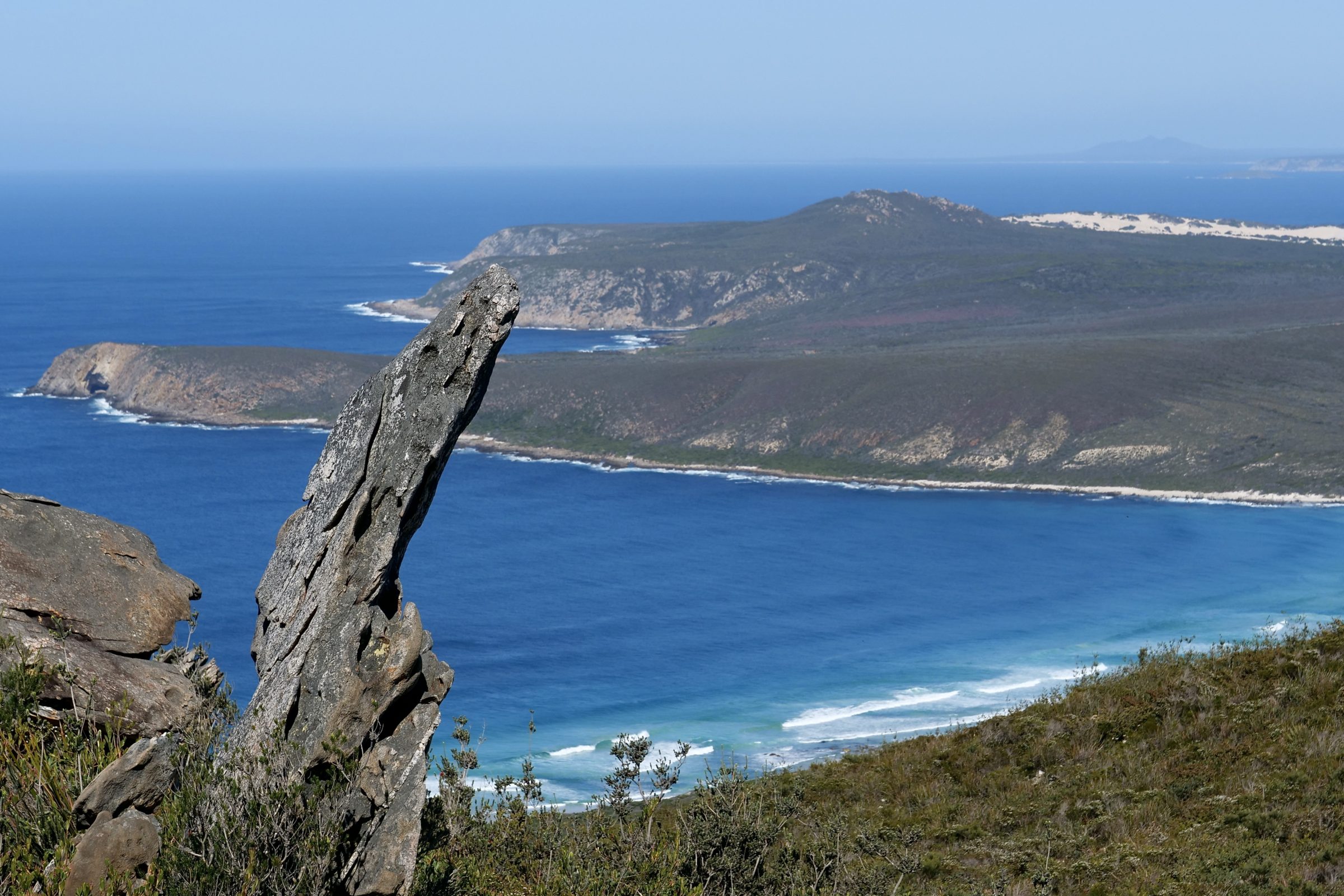
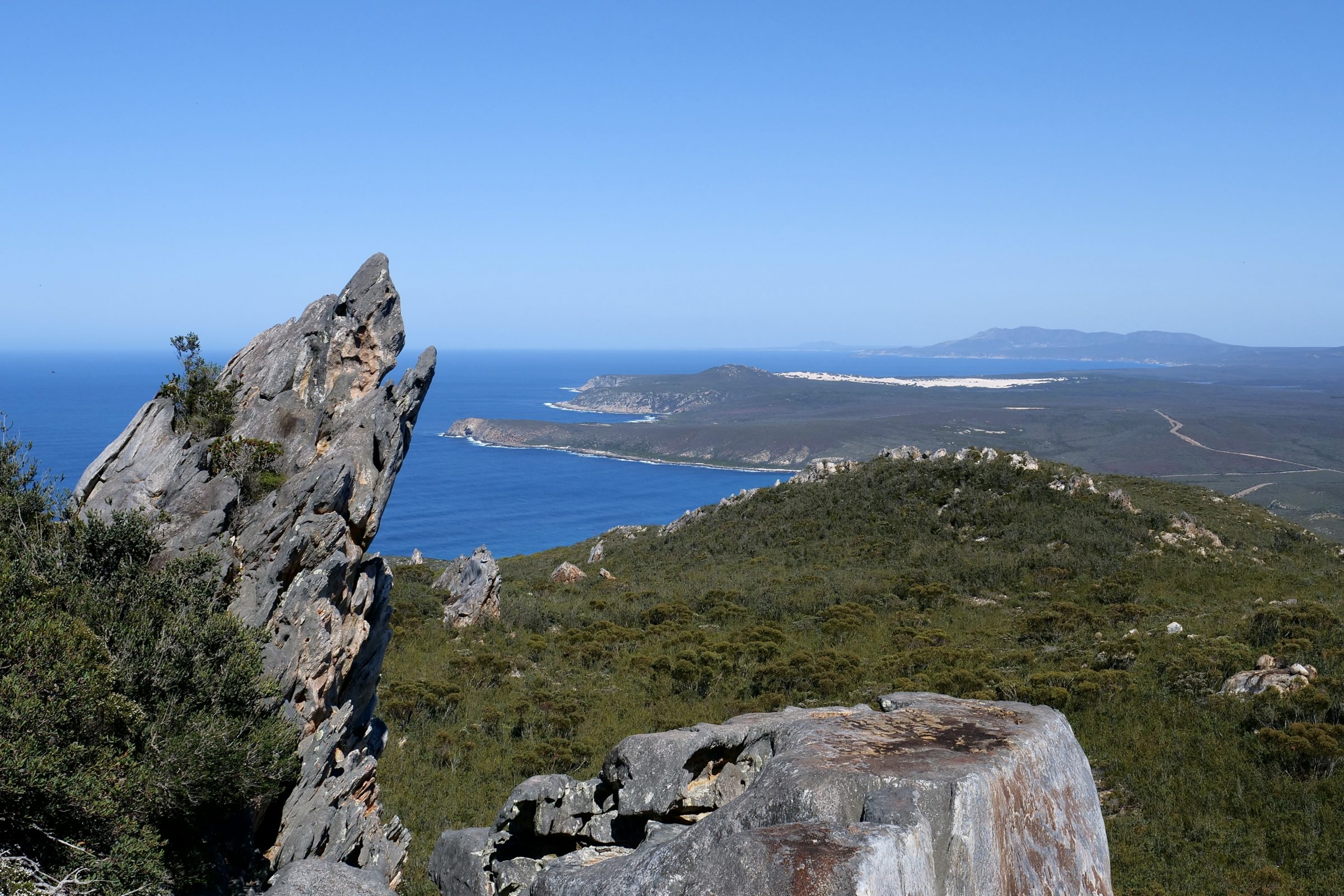
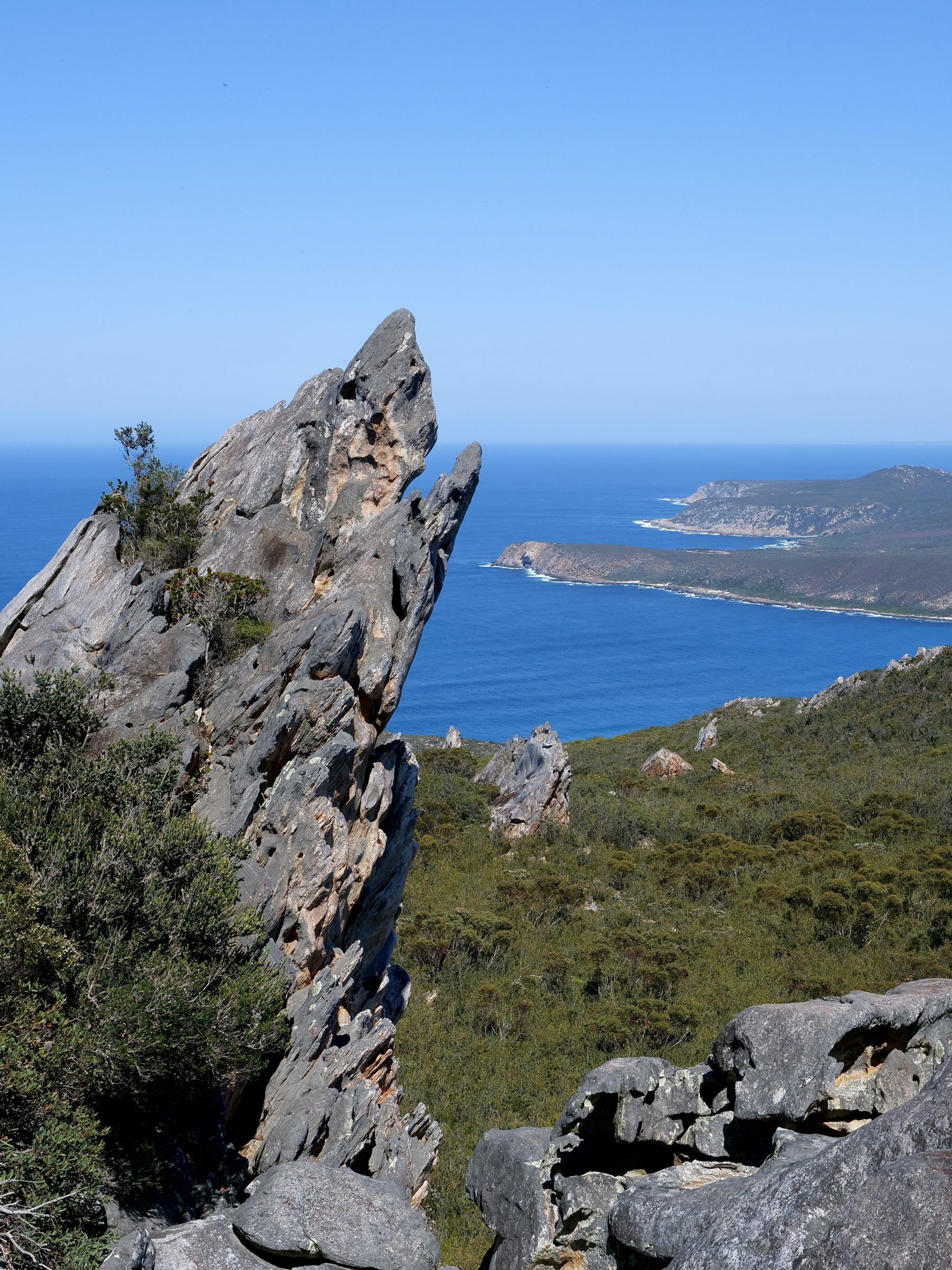
On most days, morning – early morning, especially – is the best time to do this walk, given that the especially wild and beautiful views are those to your west.
Click here to see just how different this walk can be, depending on the time of day/year, and the weather.
(if you are interested in great wild Australian places to walk in, especially walks in Western Australia, www.thelifeofpy.com is warmly recommended)
For a large photo gallery of southwest Australian flora, and some explanation of its uniqueness and extraordinary diversity, click this.
